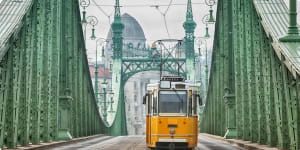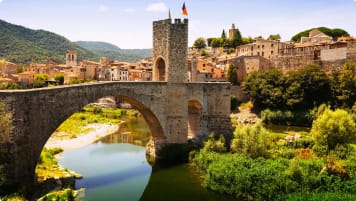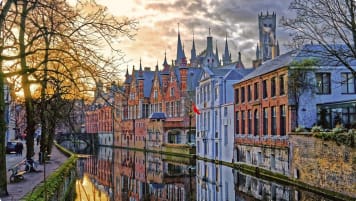Sofia, Bucharest and Budapest | Small Group Tour
Bulgaria, Hungary and Romania have been at the crossroads of civilisations for centuries. This is a small group tour from one of the best small group tour companies for Europe, whose trips each day, select destinations from local guides that provide authentic experiences for our guests who are on holiday.
From €8,821EUR
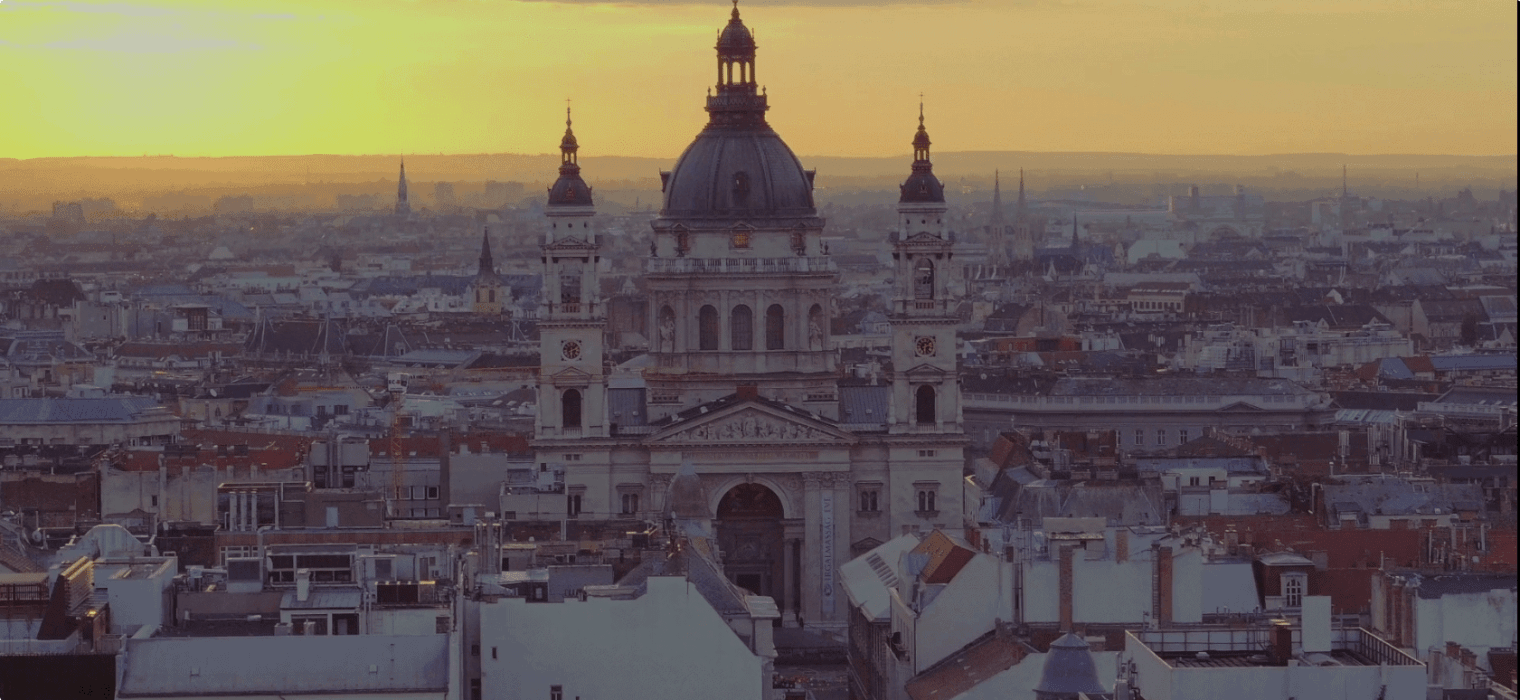
Highlights
- 1. Stroll through Plovdiv village, along cobbled streets flanked by Ottoman –era buildings and soak up the bohemian atmosphere of a by-gone age.
- 2. Descend into Europe’s largest and most unique salt mine. The Slanic Salt Mine offers two levels of chambers with scenes and sculptures depicting Romanian history
- 3. Heard of ‘Dracula’? Visit 14th century Bran Castle, made famous by notorious Vlad the Impaler. Timidly explore the ‘vampire’ count’s residence.
- 4. Ride a steam train into the mountains of Romania. Journey through forests and beside a raging river to the logging town of Viseu De Sus with its ancient wooden buildings and farm animals.
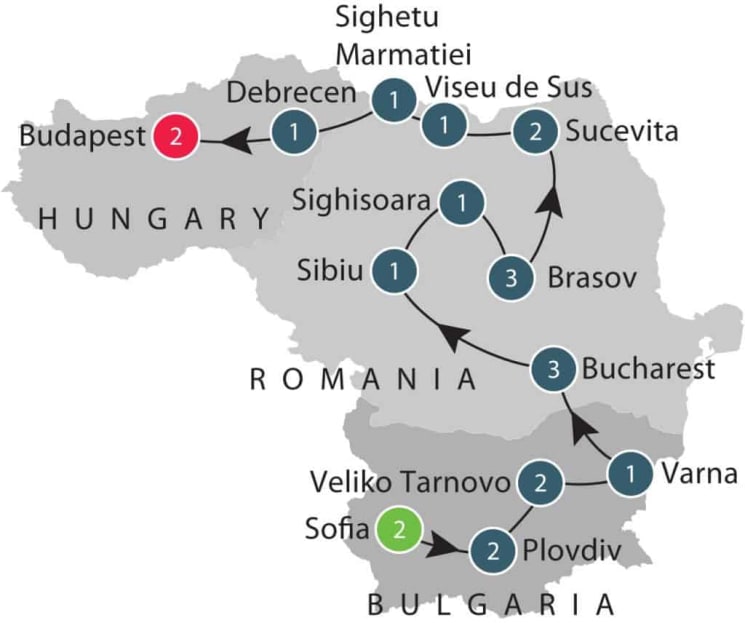
Departure Dates
| Departure Date | Price |
|---|---|
| 08 September 2025 Ends 30 September 2025 • 23 days €8,821 Twin €10,619 Single Available | Selected |
| 07 September 2026 Ends 29 September 2026 • 23 days €9,309 Twin €11,202 Single Available | |
| 06 September 2027 Ends 28 September 2027 • 23 days €9,615 Twin €11,568 Single Available |
Sofia, Bucharest and Budapest | Small Group Tour
Join Odyssey Traveller on this adventure as we travel from Sofia to Budapest, taking in Bulgaria, Romania, and Hungary with this small group tour of Sofia, Bucharest and Budapest. This corner of Europe has been at the crossroads of civilisations for over 2,000 years and there are reminders everywhere. Thracians, Romans, Ottoman Turks and the Austro-Hungarian Empire have all contributed to a rich tapestry of crumbling ruins and archaeological treasures.
Until recent years, Bulgaria and Romania were rarely visited destinations but since the fall of the Iron Curtain and communist dictatorships in 1989, this has all changed. These countries have now emerged from isolation and have so much to offer the inquisitive visitor.
Travelling from Sofia to Budapest
The Sofia, Bucharest, Budapest small group tour focuses on how historical influences have shaped these countries. Throughout our tour we will see dramatic reminders of the region’s ancient heritage:
- Thracian tombs and rock carvings
- Roman ruins
- Medieval castles and fortresses
- Ottoman-era mosques and architecture
- grand Austro-Hungarian buildings and icons
- Communist-era monuments, palaces and museums
We visit magnificent wooden churches and monasteries filled with relics, walk along the cobbled lanes of picturesque villages, and admire ancient timber-framed houses. The Prejmer Fortified Church, one of the many fortified churches in Transylvania, Romania, is a UNESCO World Heritage Site.
We explore treasure-filled museums and galleries, wander through parks, forests and along beaches. Evenings may be spent watching the world go by from local cafes and restaurants in this relatively "undiscovered" region of Europe.
This tour will take you through a rural landscape relatively untouched by the modern world and you can look out upon hand-ploughed fields. These countries also offer a diversity of wildlife, and stunning scenery seen rarely in the rest of Europe.
We cross mountain ranges, drive through beautiful forests, pass glacial lakes and sandy beaches beside the Black Sea. We even have time to visit a salt mine, animal sanctuary, and winery.
Learn about the people and the culture
We will learn that Bulgaria and Romania are not homogeneous societies and offer considerable cultural diversity. Ethnic minorities such as the Roma, Magyars, and Germans have a distinct nature.
Think Romania, think Dracula. We visit several castles associated with Vlad the Impaler. Although Romania traces its ancestry to the Romans, contemporary fiction associates Transylvania with vampires and other such horrors.
Our program concludes in Budapest, the vibrant Hungarian capital set on the Danube River. You will be impressed by this global city, today an economic power-house but formerly the co-capital of the Austro-Hungarian Empire. A city with 2,000 years of settlement boasting diverse architectural styles and a range of museums, theatres and cultural institutions. Budapest has been identified as one of the most beautiful cities in Europe and you will soon see why.
We will be accompanied throughout the tour by an Odyssey Program Leader. In all countries, there will be knowledgeable English-speaking local guides to assist in the interpretation and presentation of information.
We travel around the region in a comfortable modern coach at a slow pace with frequent stops.
Travel Tips and Articles of Interest
For Odyssey Travellers, articles that may be of interest are often published on this website to assist you with your tour planning.
For this small group tour travelling from Sofia to Budapest, see these articles:
We also have several articles you can read to prepare:
- Practising Responsible Travel
- EU Introduces New Authorisation System for Visa-Free Travellers
- Problem of “Overtourism”
- Women’s Walking Shoes
- Selecting Shoes and Socks
To learn more about Hungary, Romania and Bulgaria, read our country profiles.
Gallery
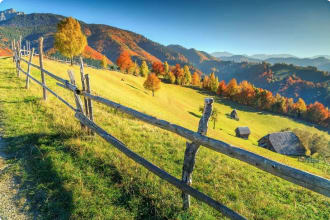

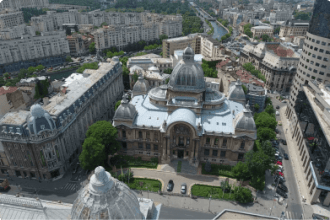
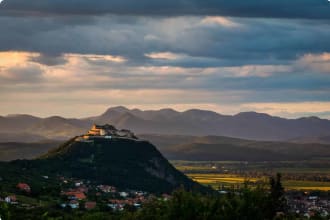

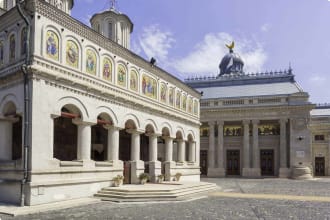


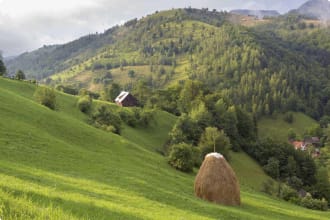
Itinerary
23 days
Day 1: Sofia
Accommodation: Best Western Hotel or similar.
On arrival in Sofia, make your own way to our hotel. We begin our program with an introductory meeting in the late afternoon, followed by a welcome dinner.
Day 2: Sofia
Accommodation: Best Western Hotel or similar.
Today we enjoy a guided tour of Sofia and explore the main sights of the city. We will visit the Archaeological museum, St Alexander Nevski Cathedral and crypt and view St George’s Rotunda and Eagle Bridge. Our tour will also include the Bojana Church and Museum of Socialist Art. Following lunch we drive to Rila Monastery, a UNESCO heritage site. Dinner is by own arrangements in the area near the hotel.
Day 3: Plodiv
Accommodation: Hebros Hotel or similar.
We travel almost 300 kilometres from Sofia to Karabunar today to enjoy wine tasting at Villa Terres Vineyard. From here we transfer to Panagyurishhte to view the Memorial Complex at Apriltsi and Hisarya to explore this Roman archaeological site. Before our arrival in Plovdiv, we will make one final stop, at Tarnichene to learn about rose water production. Dinner is included at the hotel.
Day 4: Plovdiv
Accommodation: Hebros Hotel or similar.
We have a Plovdiv city walking tour past Ottoman style houses to view the main sights of the city. Our tour includes: the Roman theatre, the ethnographic collection at Kujumdzioglu’s House, Lamartine House, Dzhumaya Mosque and the house of Stepan Hindliyan, a 19th century American merchant. In the afternoon we visit Bulgaria’s second largest monastery at Bachkova. Dinner is by own arrangements at one of the many Bohemian restaurants near our hotel.
Day 5: Veliko Tarnovo
Accommodation: Hotel Yontra Grand Hotel or similar.
First stop today is at the Thracian tomb at Kazanluk. From here we drive to Shipka to explore a Russian style church built to commemorate Russians who died fighting the Turks. Nearby, we stop to view the former communist meeting place at Buzludzha. Our day concludes with a tour of the preserved village at Etara Ethnographical museum before arrival at Veliko Tarnova. Dinner is included at the hotel and there is ample time to wander the ancient city in the evening.
Day 6: Veliko Tarnovo
Accommodation: Hotel Yontra Grand Hotel or similar.
We begin with a visit to the stunning Tsaravets fortress before our journey to Arbanasi and a tour of the Church of Nativity. At short distance away we stop at the Roman ruins at Nikyup. During the afternoon, we have time to wander the historic centre of Veliko Tarnova and dine at one of its many fine restaurants.
Day 7: Varna
Accommodation: Hotel Capitol or similar.
Today we transfer to Shumen and visit the impressive Monument to 1,300 years of Bulgarian history. Our next stop is the Madera horseman carving on a rock face. Before arrival in Varna we will stop to view the unusual Stone Forest. There will be time to explore the coastal city with dinner by own arrangements at a local restaurant offering sea views.
Day 8: Bucharest
Accommodation: Hilton Garden Inn or similar
Our journey today takes us across the border into Romania. Our first stop will be at Balcik to visit Queen Marie of Romania’s palace and the Botanic Gardens. A delightful drive along the coast follows and brings us to Constanta and entrance to the National Museum of History and Archaeology. Upon arrival in Bucharest we will dine by own arrangements in the Old Town.
Day 9: Bucharest
Accommodation: Hilton Garden Inn or similar
This morning we enjoy a guided city tour which will include the Square of the Revolution, entrance to the Palace of Parliament, the Romanian Peasant Costume Museum and the mansion of former communist dictator Ceausescu. The afternoon offers free time to explore the Romanian capital before dining at a traditional restaurant offering a folklore show.
Day 10: Bucharest
Accommodation: Hilton Garden Inn or similar
Today is a free day to explore Bucharest. Your program leader will offer ideas on how to use the day productively.
Day 11: Sibiu
Accommodation: Ibis Sibiu or similar.
We will drive along the Transfagarasan road to Sibiu with stops to visit the orthodox cathedral at Curtea de Arges and the castle at Poienari. At the city of Targoviste we will explore the castle with its links to Vlad the Impaler and Ceausescu. This is a journey through spectacular scenery and as we rise through the mountains we will pause to view a dam and two glacial lakes at Vidraru and Balea. In the evening we will make our own arrangements to dine at a local restaurant near our hotel.
Day 12: Sighisoara
Accommodation: Casa Wagner Hotel or similar.
We begin with a guide tour of Sibiu with entrance to the city’s leading attractions. A short ride then brings us to the largest salt mine in Europe where we descend two levels to view sculptures and scenes from Romanian history. We continue on to Biertan to see its magnificent fortified church. Upon arrival at We begin with a guide tour of Sibiu with entrance to the city’s leading attractions. A short ride then brings us to the largest salt mine in Europe where we descend two levels to view sculptures and scenes from Romanian history. We continue on to Biertan to see its magnificent fortified church. Upon arrival at Sighisoara we explore the ancient citadel, the Old Town and various historic houses including the birthplace of Vlad the Impaler. Our accommodation is within the citadel and where we dine by our own arrangements.
Day 13: Brasov
Accommodation: Casa Wagner Hotel or similar.
Today we drive south with a stop at a tiny fortified church in the little village of Viscri. Later, at nearby Rupea we enjoy a guided tour of the castle. There will be an early arrival in Brasov allowing time for a city tour and entrance to the Black Church. In the evening we will be treated to a dinner and folk show at Cerbul Carpatin restaurant.
Day 14: Brasov
Accommodation: Casa Wagner Hotel or similar.
We experience a full day trip from Brasov with a visit to the notorious Bran Castle, used by Vlad the Impaler also known as Dracula in popular fiction. A short drive through hills brings us to Sinaia for lunch, entrance to Peles Castle and a tour of a bear sanctuary to learn about the efforts made to rescue bears from inhumane conditions. .Upon our return to Brasov we ride the cable car to the summit of Mt Tampa for breath taking views. Dinner will be by our own arrangements within the city centre.
Day 15: Lacu Rosu
Accommodation: Hotel Lacu Rosu or similar.
We depart Brasov for Prejmer to visit the huge and very impressive fortified church, one of the largest in Romania. We arrive early afternoon in Lacu Rosu with time to explore the local area. Dinner at the hotel is included.
Day 16: Sucevita
Accommodation: Popas Turistic Bocovina or similar.
Our journey today takes us through the beautiful Bicaz Gorge. Along the way we visit two quite unique monasteries: Neamt, famous for its decorated skulls and Agapia for its nuns and frescoes. Dinner at the hotel is included.
Day 17: Sucevita
Accommodation: Popas Turistic Bocovina or similar.
Following a guided tour of Sucevita we enjoy a horse-drawn carriage ride to the local ornately decorated monastery. A short ride brings us to a black pottery centre at Marginea, the monastery at Voronet and something quite special; the Museum of Decorated Eggs at Vama. Dinner is by own arrangements within the Old Town of Sucevita.
Day 18: Viseu de Sus
Accommodation: Hotel Gabriela or similar.
Today there is a long drive through spectacular scenery, over the Prislop Pass to the small town of Viseu de Sus. Along the way, we visit two special churches: Ieud Deal and Poienile Izei. Dinner is included at the hotel.
Day 19: Sighetu Marmatiei
It’s not every day that you get to ride a steam train beside a river into the depth of a forested mountainside. Our ride will include a BBQ lunch after which we rejoin our coach and journey to Sighetu Marmatiei to visit a monastery and wooden church and have dinner at the hotel.
Day 20: Debrecen
Accommodation: Centrum Hotel or similar.
We begin with a guided tour of Sighetu Marmatiei, a town located on the border with Moldova. The town’s Memorial Museum commemorates the incarceration, torture and starvation of enemies of the communist state. We then drive along the border to Sapanta to visit a cemetery where wooden tombstones are carved and painted showing how a person died or depict scenes from their life. Our last stop is Oradea to view Art Nouveau buildings, Unity Square and Black Eagle Palace. This is our last day in Romania and we conclude by crossing the border into Hungary. Dinner is by own arrangements.
Day 21: Budapest
Accommodation: Mercure Budapest City Centre or similar.
We view the main sights of Debrecen including a tram ride along Piac Utca and entry to the Protestant Great Reformed Church. A short ride brings us to Hortobagy where we will be treated to an entertaining horse skills show. Our day concludes in Budapest with dinner by own arrangements at one of the many restaurants near our hotel.
Day 22: Mercure Budapest City Centre or similar.
Today we enjoy a full day guided tour of Budapest which includes the castle, the Hospital in the Rock (formerly a nuclear fallout bunker), the Raoel Wallenberg Memorial and the old royal palace in Godollo. In the evening, we will be treated to a farewell dinner with an Austro-Hungarian theme.
Day 23: Budapest
After breakfast, the tour concludes.
Includes / Excludes
What’s included in our Tour
- 22 nights of hotel accommodation
- 22 breakfasts, 1 lunch and 9 dinners.
- All excursions, entrance fees, and tipping as per itinerary
- Transport in comfortable and modern coaches.
- Services of Tour Leader for the duration of tour.
- Details preparatory material.
What’s not included in our Tour
- International airfares and departure taxes.
- Comprehensive travel insurance.
- Items of a personal nature such as telephone calls, laundry and meals not listed on the itinerary.
Participants must be able to carry their own luggage, climb and descend stairs, be in good health, mobile and able to participate in 3-5 hours of physical activity per day, the equivalent of walking / hiking up to 8 kilometers per day on uneven ground.
Book now
Make it a private tour
Easing your journey
Crossing international borders with restrictions
The list of requirements to travel internationally has changed and will continue to change for several years. Odyssey is here to assist you in managing your way through these requirements:
For more information see our Crossing international borders with restrictions page.
Book With Confidence
If less than 30 days before your tour starts you are unable to travel as a result of Government travel restrictions, Odyssey Traveller will assist you with a date change, provide you with a credit or process a refund for your booking less any non-recoverable costs.
See Terms and conditions for details.
Peace of Mind Travel
The safety of our travellers, tour leader, local guide and support staff has always been our top priority and with the new guidelines for public health and safety for keeping safe for destinations around the world, we’ve developed our plan to give you peace of mind when travelling with us.
See Peace of Mind Travel for details.
Reading List Download PDF
Border: A Journey to the Edge of Europe
Kapka Kassabova
In this extraordinary work of narrative reportage, Kapka Kassabova returns to Bulgaria, from where she emigrated as a girl twenty-five years previously, to explore the border it shares with Turkey and Greece. When she was a child, the border zone was rumored to be an easier crossing point into the West than the Berlin Wall, and it swarmed with soldiers and spies. On holidays in the “Red Riviera” on the Black Sea, she remembers playing on the beach only miles from a bristling electrified fence whose barbs pointed inward toward the enemy: the citizens of the totalitarian regime.
Kassabova discovers a place that has been shaped by successive forces of history: the Soviet and Ottoman empires, and, older still, myth and legend. Her exquisite portraits of fire walkers, smugglers, treasure hunters, botanists, and border guards populate the book. There are also the ragged men and women who have walked across Turkey from Syria and Iraq. But there seem to be nonhuman forces at work here too: This densely forested landscape is rich with curative springs and Thracian tombs, and the tug of the ancient world, of circular time and animism, is never far off.
Border is a scintillating, immersive travel narrative that is also a shadow history of the Cold War, a sideways look at the migration crisis troubling Europe, and a deep, witchy descent into interior and exterior geographies.
Bulgaria and Bulgarians A Brief History
Plamen Pavlov
Republic of Bulgaria is a state located in South-east Europe and covers the central and eastern parts of Balkan Peninsula. To the north it borders with Republic of Rumania; to the east, with the Black Sea; to the south with Republic of Turkey and Republic of Greece, and to the west, with Republic of Macedonia and Republic of Serbia. Bulgaria`s surface area is 110 993 sq. km. The greatest distance from the north to the south is about 330 km, and from the west to the east, about 500 km. The population of Bulgaria, according to the census of 2001 is 7 973 673. About 85% of it is ethnic Bulgarians, 11% are Turks, nearly 4% are Gypsies and less than 1% is of other ethnic groups: Jews, Armenians, Greek, Russians. Bulgaria`s capital city is Sofia. It is also the largest city of the country with a population of 1 114 476 people. The next largest city is Plovdiv (population of 341 374), followed by Varna (population of 308 601), the main seaport of the country. Bulgarian is the official language. As regards religion almost 90% of the population is Christians and of these more than 80% are Eastern Orthodox. The second most numerous community, nearly 10%, is Muslim. There are also Judaists. As regards its state organization Bulgaria is a parliamentary republic with a single chamber parliament (People`s assembly). It consists of 240 people`s representatives of a 4-year mandate. The head of state is the President of a 5-year mandate. The central body of the top executive power is the council of ministers. The monetary unit of the country is the Lev (the international code is BGN). One Lev equals 100 stotinki. The value of notes is 2, 3,10, 20, 50 and 100 Levs, while that of coins is 1, 2, 5,10, 50 stotinki and 1 Lev. From AD 1999 the Lev has been tied up firmly first to German Mark and then to the Euro: 1 EUR = BGN 1,95583. March 3 is Bulgaria`s official national holiday. Since January 1st, 2007 Republic of Bulgaria is a full member of the European Union.
Bulgaria - Culture Smart!: The Essential Guide to Customs & Culture
Juliana Tzvetkova
Bulgaria, situated in southeastern Europe on the Black Sea, is one of Europe’s best-hidden secrets. A haven for nature and history buffs, this beautiful sunny country welcomes the traveler with bread and salt, a red rose, and ? wooden vessel full of sparkling wine. These three emblems of ancient treasures, rose oil, and natural beauty symbolize its distinctive culture. This youngest member of the European Union has been riding a roller-coaster of radical transformation since emerging from the Eastern Bloc and becoming a market economy twenty years ago, changing dramatically in many ways and yet preserving its own particular charm and slow-paced way of life. Invasions and waves of migration, dating back to neolithic and classical times, have contributed to a unique cultural mosaic. The country boasts the oldest hoard of gold treasure in the world. The seventh-century Bulgarian empire dominated the Balkans and was a powerhouse of Slavonic culture. Later, Ottoman conquest and Soviet influence left their mark on the national psyche. Culture Smart! Bulgaria provides a key to understanding the Bulgarian people. It outlines their long and complex history, shows you what everyday life is like there today, and offers advice on what to expect and how to behave in different circumstances. This is a small country of proud and persevering people. More than the golden sands of the “Bulgarian Riviera,” the vast thickly forested expanses of the Rhodopes or the Rila and Pirin ranges with their snow-capped peaks and emerald-green lakes, the music and dances and the warmth and cordiality of the Bulgarians will conquer your heart and bring you back time and again.
Romania: Culture Smart and the description is for Culture
Debbie Stowe
A land of mountains, hills, and fertile plains, Romania is a tourist destination waiting to be discovered. It is a rich and complex country: a place whose cities are home to beautiful parks and vibrant cultural scenes; whose people welcome guests warmly into their homes, sharing the best of whatever they have, and party into the night, suffused by Latin joie de vivre. Buffeted over time between three great powers—the West, Russia, and Turkey—Romania betrays the cultural influences of each, and it can be a difficult place to get a handle on. Culture Smart! Romania provides an indispensable tool for the foreign visitor, digging deep behind the clichés, explaining many of the behavioral quirks of the people, smoothing your path toward better understanding, and outlining the many attractions—cultural, social, and geographical—that await you in this underexplored part of Europe.
A Concise History of Romania (Cambridge Concise Histories)
Keith Hitchins
Spanning a period of 2000 years from the Roman conquest of Dacia to the present day, A Concise History of Romania traces the development of a unique nation situated on the border between East and West. In this illuminating new history, Keith Hitchins explores Romania's struggle to find its place amidst two diverse societies: one governed by Eastern orthodox tradition, spirituality and agriculture and the other by Western rationalism, experimentation and capitalism. The book charts Romania's advancement through five significant phases of its history: medieval, early modern, modern and finally the nation's 'return to Europe'; evaluating all the while Romania's part in European politics, economic and social change, intellectual and cultural renewals and international entanglements. This is a fascinating history of an East European nation; one which sheds new light on the complex evolution of the Romanians and the identity they have successfully crafted from a unique synthesis of traditions.
A Concise History of Hungary (Cambridge Concise Histories)
Miklós Molnár
This book offers a comprehensive thousand-year history of the land, people, society, culture and economy of Hungary, from its nebulous origins in the Ural Mountains to the 1988 elections. It tells above all the thrilling story of a people who became a great power in the region and then fought against--and were invaded by--Ottomans, Germans and Soviets. The Hungarian people preserved nevertheless a continuous individuality through their Ural-born language and a specifically Hungaro-European culture.
Budapest: A Cultural Guide
Michel Jacobs
Budapest, dramatically situated on the Danube, is a city that makes an immediate impression on a visitor. It exhibits all the scale, grandeur and excitement of a major capital, yet it is a city absorbed by nostalgia, and openly scarred by its history. A travelers enjoyment of the city will no doubt benefit from a fuller understanding of Budapests rich and idiosyncratic culture. Budapest: A Cultural Guide is a personal and informative introduction to Budapest, mingling history with anecdote, exploring past and present.
Travel writer Michael Jacobs begins his cultural guide with lively essays, interwoven with some of the author's own experiences, dealing with key aspects of the city's life, history, and culture. Jacobs also includes a series of six walks arranged by district, enabling visitors to experience the city's evolution for themselves, and featuring all the major sites and a personal selection of less well-known, often neglected ones. Rich photos provide an introduction to Budapests beauty for the armchair traveler, and detailed maps plot out the nuances that make this Eastern European city one of the most popular tourist sites of the 1990s.
